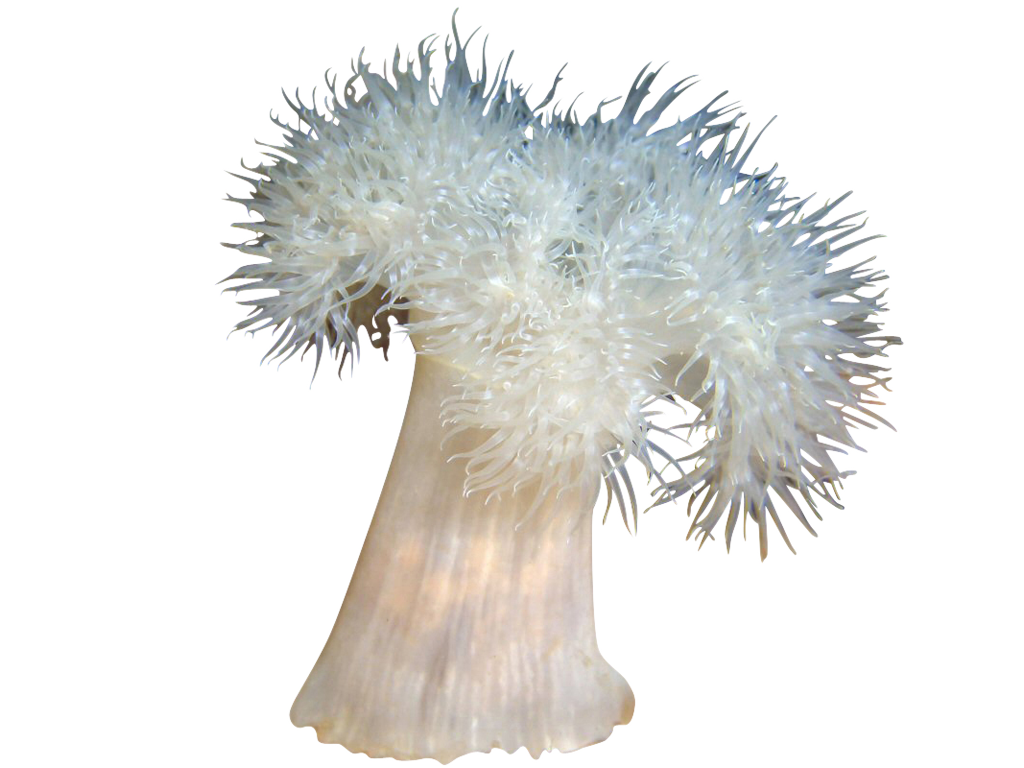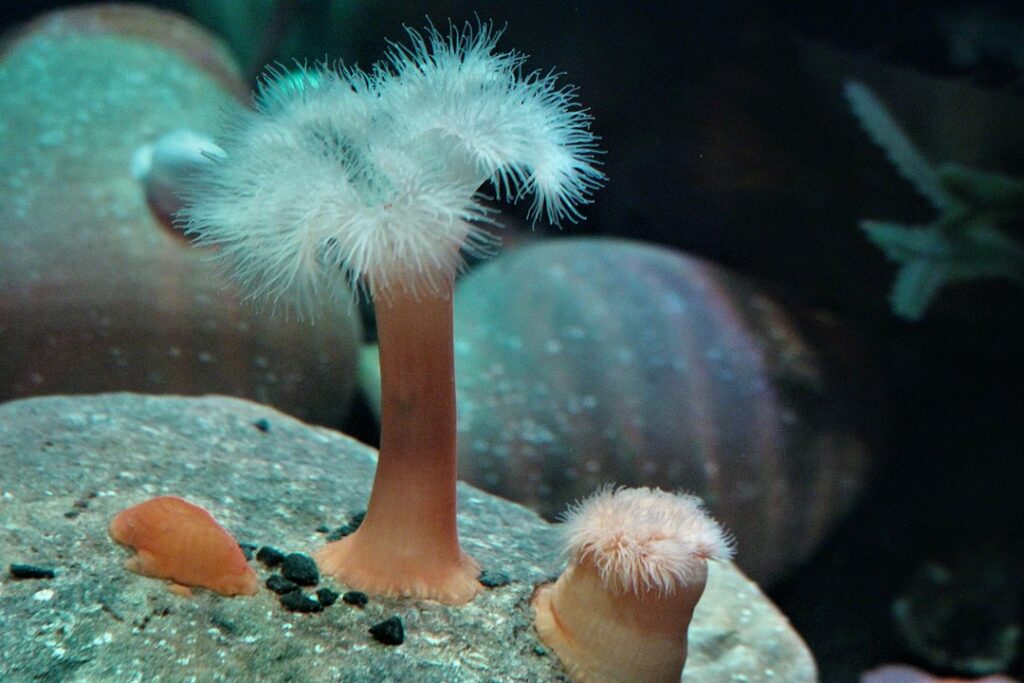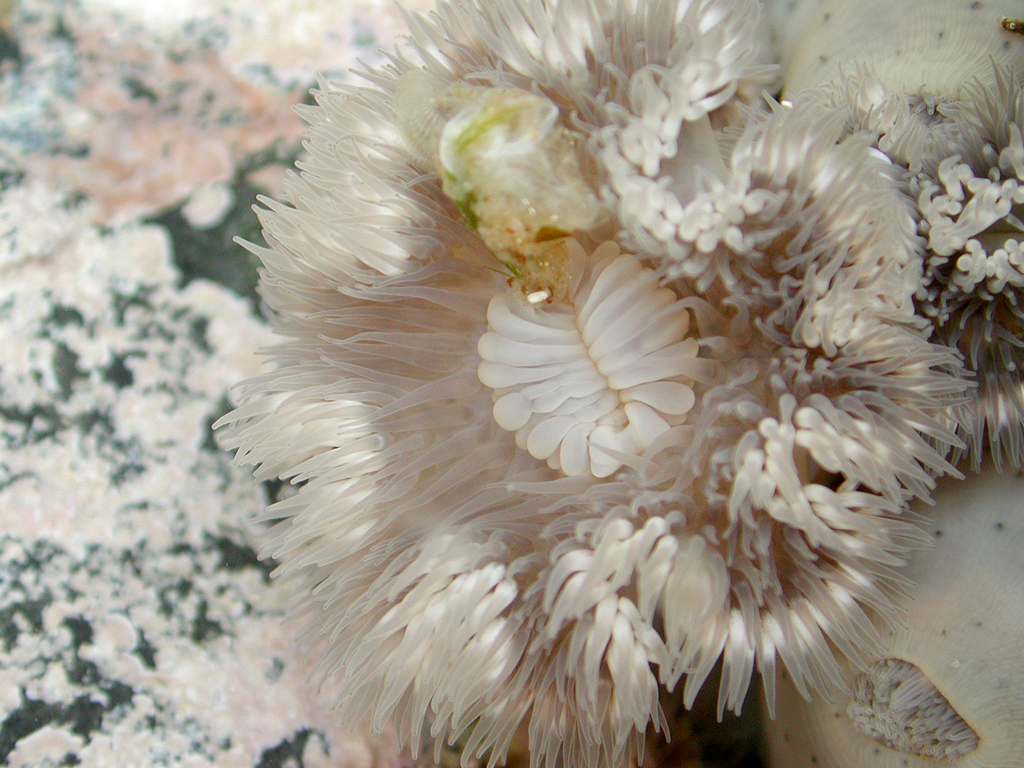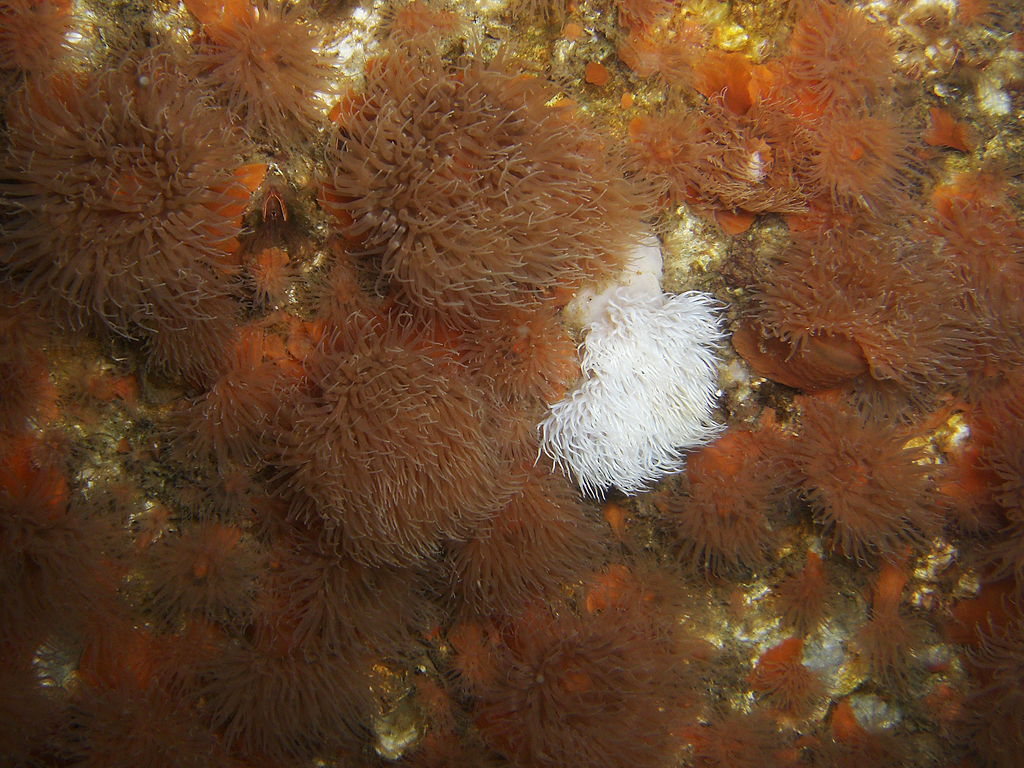Frilled anemone
Metridium senile

Animals that look like mushrooms or plants
The frilled anemone is an anemone that lives in Swedish waters. Sea anemones may look like plants or mushrooms, but they are an order of aquatic animals within the group of cnidarians. The cnidarians also include the relatives of the anemone, such as corals and jellyfish. The frilled anemone thrives on hard bottoms down to a depth of 100 metres. But frilled anemones can often be found on jetties and piers. With its large foot, the frilled anemone can move between locations, albeit very slowly.

Photo: Emoke-Denes-CC-BY-SA
Stinging nettle cells
Anemones are shaped like something known as a polyp. They have a cylinder (tube) form, consisting of a body, a foot, and a crown with tentacles. In the body there is a cavity, like a sack, which acts as the stomach of the anemone. An opening which serves as both mouth and anus leads to the stomach. The many tentacles of the anemone move back and forth in the water. The tentacles are covered with burning nettle cells that protect against predators, and paralyse and capture prey such as shrimps and plankton. The tentacles are used to move food to the mouth.

Photo: NOAA-Photo-Library-CC-BY
Able to clone itself
The frilled anemone has two completely different ways of reproducing. One is through sexual reproduction – when a male releases sperm into the water, nearby females are triggered to release their eggs. The eggs are fertilised and then hatch into tiny free-swimming larvae, which eventually sink to the bottom and find a place to grow. The other method of reproduction is by budding! A frilled anemone can split in two, or spread small pieces of itself along the bottom as it moves. These halves, or small pieces, can grow into new individuals. They are clones of the original frilled anemone.

Distribution in Sweden
The West coast.
White marking = Distribution

Threat based on the Red List

Trade regulations
CITES: Not listed.